Get PeakVisor App
Sign In
Search by GPS coordinates
- Latitude
- ° ' ''
- Longitude
- ° ' ''
- Units of Length

Yes
Cancel
Share ×

Scan the QR code and open PeakVisor on your phone
❤ Wishlist ×
Choose
Delete
In a rampant area of overgrown wilderness in eastern Taiwan lies the fertile Hai’an Mountains Major Wildlife Habitat (海岸山脈野生動物重要棲息環境) that holds 7 named peaks. Chengguangaoshan (成廣澳山) is the tallest and most prominent hill in the region, stretching 1,597 meters (5,240 ft).
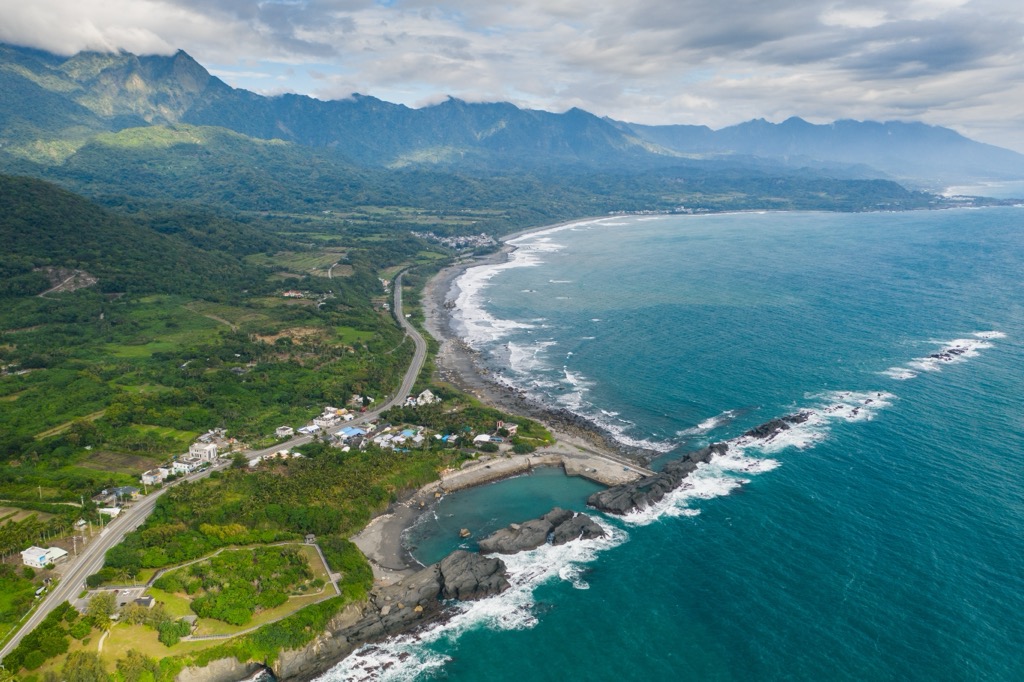
The Hai’an Mountains Major Wildlife Habitat spills across the Fuli Township (富里鄉) of Hualien County (花蓮縣) and Taitung County’s (臺東縣) Chenggong Township (成廣澳鄉), sandwiched between the Huadong Valley (花東縱谷) and the Huandong Coastal Reserve (花東沿海保護區). Ranging in elevation between 200 to 1,597 meters (656 to 5,240 ft), the topography is steep and ideal for protecting plant species and wildlife.
The largest protected area of Taiwan’s Hai’an Mountain Range (海岸山脈), the wildlife habitat covers 3,300 ha (8,154 ac). Known for its undulating coastal hills that run along Taiwan’s east coast, the Hai’an Mountain Range contains Taiwan’s smaller hills, hardly reaching above 1,700 meters (5,577 ft). Hai’an Mountains Major Wildlife Habitat’s six other hills are:
While bordering Taiwan’s backcountry and close to eastern Taiwan’s shores, the Hai’an Mountains Major Wildlife Habitat lies near other well-known parks and forests. Fuyuan National Forest (富源國家森林遊樂區) is in the north, Xiangyang Forest (向陽森林遊樂區) is west, and Yushan National Park (玉山國家公園) lies northwest. Taitung City (臺東市) lies southwards, and Sanxiantai Island (三仙台) is east.
Being close to Taiwan’s east coast, the Hai’an Mountains Major Wildlife Habitat endures high rainfall of 2,500 mm (98 in) during typhoon season as it hits eastern Taiwan’s land first. However, in other parts of the year, water shortages are not uncommon from the dry and arid climate. This is coupled with the humid and warm climate, with a yearly average of 72°F (22°C) and summer highs of 88°F (31°C).

Chengguangaoshan and the six other hills belong to the Hai’an Mountain Range, also known as Taiwan’s Coastal Mountain Range. Comprising a total of 191 peaks, only 20 of the coastal sierra hills exceed 1,000 meters (3,281 ft). Forming a spine along eastern Taiwan’s land, the Hai’an Mountain Range spans 150 km (93 km) from below Hualien City (花蓮市) to Taitung City.
The Hai’an Mountains Major Wildlife Habitat’s geological strata comprise volcanic rock from the Miocene epoch. Igneous rock and andesite magma form at the core, while dark loamy soils are present among the ridges.
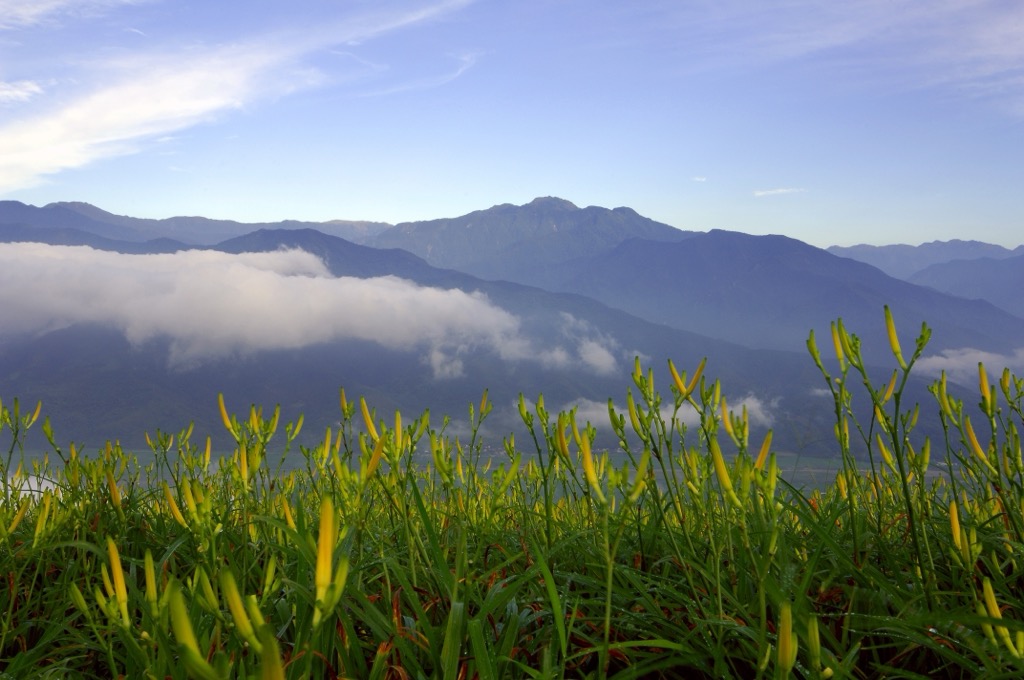
The plant life below 700 meters (2,297 ft) is characterised by tropical rainforest flora, such as ferns and fig plants. From 700 meters and above, a subtropical broadleaf forest mainly of Lauraceae and Fagaceae flora dominates the environment. The main tree species are stone oak, phoebe, and the camphor tree, which is native to Taiwan.
The leafy woodlands provide a suitable habitat for wildlife. Some of the protected species in the Hai’an Mountains Major Wildlife Habitat are the long-maned goat, the Taiwan macaque, and the black-naped oriole. While records show that there are 13 mammal groups, 57 bird species, 16 types of amphibians and reptiles, and 20 butterfly species.
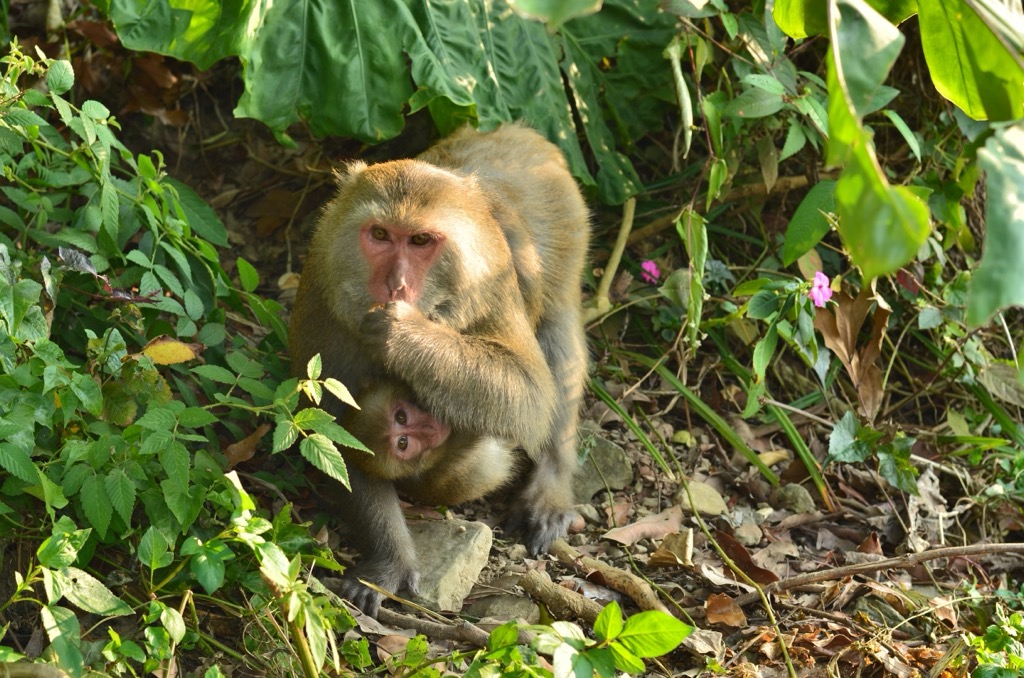
Fuli and Chenggong townships are the heart of Amis country in Taiwan. While other Taiwanese tribes live in this area, like Hakka and Hoklo people, the Amis outnumber them. In addition, the Amis are Taiwan’s largest indigenous tribe, with a population of around 214,000 people.
The Amis people have special traditions and customs, and one of their beliefs is to respect nature as a living entity. Each year, between July to September, the Amis people celebrate the Harvest Festival, which attracts locals and international tourists alike. It’s a jubilant affair as they show gratitude for their harvest crops, celebrating with traditional song and dance while wearing their wonderfully colorful traditional attire.
These are the major hiking trails and areas in and around the Hai’an Mountains Major Wildlife Habitat:
Climbing the tallest peak in Hai’an Mountains Major Wildlife Habitat is a challenge, despite its smaller height compared to some of Taiwan’s giant peaks. As Chengguangaoshan is surrounded by hills, the path is long, and the terrain is overgrown and wild.
Trekking Chengguangaoshan Hiking Trail (成廣澳山登山步道) is more about the physicality and appreciation of nature than the love of views. As the peak is forested, you can’t see any prospects from the summit.
You’ll have to scale boulders, scramble across raging rivers, and use rope assists to pull yourself up steep cliffs. The vegetation is rampant, and the path is unclear at times, so be careful not to get lost. However, the wild foliage of tropical rattan and towering silvergrass immerses you in a dense jungle of vegetation.
Brimming the edge of the Hai’an Mountains Major Wildlife Habitat is Malaoloushan (麻荖漏山). As the highest point in the Hai'an Range, this 6.3 km (4 mi) trail offers a breathtaking journey through an unspoiled, evergreen forest of Taiwan camphor.
Like Chengguangaoshan, Malaoloushan’s terrain is sharp and steep, with wild, unspoilt greenery. Once you’ve climbed intense rock walls, you’ll pass a fragrant camphor forest, a perfect place to unwind and inhale phytoncide’s healing properties. You’ll leave feeling refreshed, with a clear mind and calm demeanour.
Once again, you’ll reach an overgrown summit, but journeying through Malaoloushan’s hilly forests is the trail’s highlight. Time your climb in the morning or afternoon to witness the mystical mountain mist roll into the woodlands.
For a view that will melt your heart, visit Loushan Falls (羅山瀑布). The two-layered waterfall drops 120 meters (394 ft) and is surrounded by lush forestry. Walk along the circular wooden boardwalk trail for the magical sights of the Loushan Falls and Huadong Valley.
En route to the waterfall, you’ll go forest bathing in the dense broadleaf grove. Adding to the tranquil environment is the waterfall’s gushing sound that echoes throughout the hillside. There are two viewing platforms on the trail. The first one is further away, so you can appreciate the whole scene of the silver cascade against the rolling emerald hills of the Huadong Valley.
At the end of the trail is the second viewing platform at the waterfall’s pool. While you can’t see the whole spectacle, the fall’s clear waters bubble beneath you as it flows downstream. You’ll hear the thunderous crashing of water and feel the coolness from the vapor.
Near Luoshan Waterfall is the geological wonder of Luoshan Mud Volcano (羅山泥火山). Known for its mud eruptions, it’s remained active for thousands of years. Locals use the mineral-rich mud for cooking, as it contains gas and brine, the perfect ingredients for making tofu.
A must-see attraction for nature and geology enthusiasts, you can also hike the forest trails and admire the pastoral scenery of the local farmlands. Many residents sell their homemade tofu and other local foods when you want a spot to eat and relax in the shade.
Head to the coast to visit eastern Taiwan’s picturesque island, Sanxiantai (三仙台). Once a peninsula of Chenggong Township’s shores, the sea eroded the rocky headland to create an island. An eight-arched bridge which looks like a giant dragon now connects Taiwan’s mainland to Sanxiantai, which is now a famous landmark.
Especially beautiful at sunrise and sunset, walk over the scenic bridge to explore Sanxiantai’s coral reef islands. Look for the wooden trail leading through the sea caves for a journey through the island’s rock belly. Then hike above ground amongst Sanxiantai’s coastal plants of various pine trees. Due to low human disturbance, the island has rich ecology.
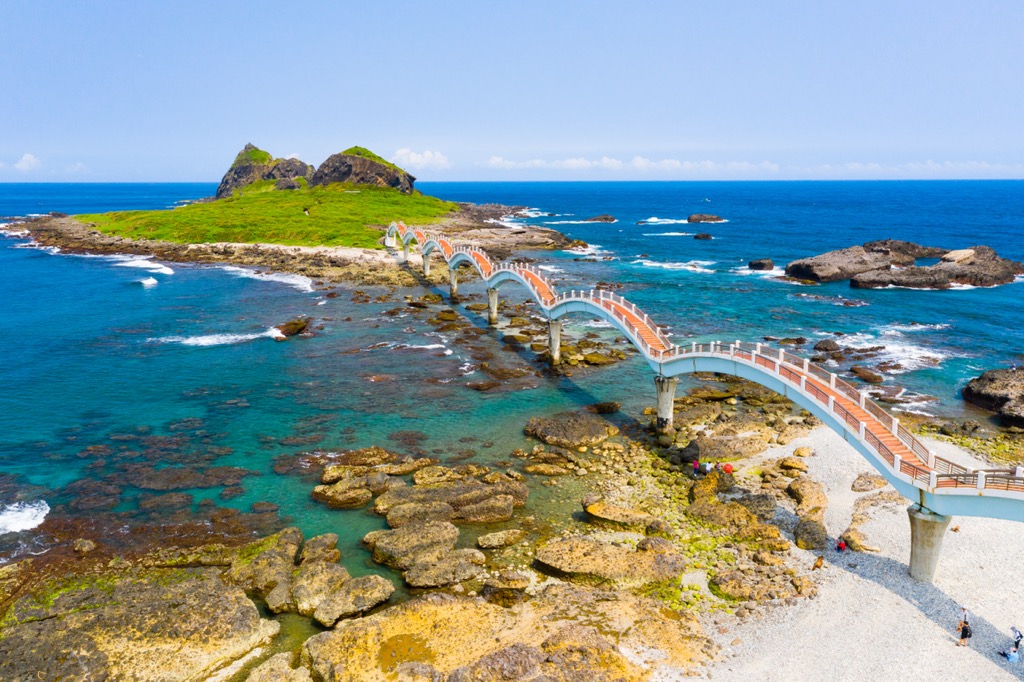
A scenic climb that is less daunting is the Liushishishan Hiking Trail (六十石山步道). Lying on the border of the Hai’an Mountains Major Wildlife Habitat, it offers stunning views of Chengguangaoshan, Antukushan, and Wanren Shan (萬人山) and the undulating terrain of the Huadong Valley.
One highlight of this hill is its summertime bloom of daylilies. Honey-colored flowers blossom on the grassy meadows, creating a golden carpet against the emerald hills. Another scenic element of the trail is the ocean mists that roll onto the landscape in the afternoon. It’s a popular hike for its short 3 km (1.8 mi) route and rewarding outlooks onto Taiwan’s backcountry.
While you may want to stay in Fuli or Chenggong townships where the Hai’an Mountains Major Wildlife Habitat lies, there are nearby options that offer a wealth of other scenic attractions. Yuli Township (玉里鎮) and Taitung City are a short drive away and are some of eastern Taiwan’s top destinations for exploring nature and Taiwan’s tribal culture.

Yuli Township is an ideal destination for outdoor enthusiasts, offering hiking and biking trails, hot springs, and rafting opportunities. Additionally, the town's central location in the county makes it an excellent base for exploring the surrounding area’s lush landscape.
Soak in the inviting steaming waters of Antong Hot Springs (安通溫泉). While it emits a hydrogen sulfide smell, the minerals contain healing properties that treat skin rashes and aids digestion. Bathing in the thermal 40 to 151°F (60 to 66°C) waters relaxes your body and tired muscles and is a restorative experience.
Next, visit the spectacular seven-layered Nanan Falls (南安瀑布) with a 50-meter (164 ft) drop. Surrounded by a verdant jungle, it's a beautiful sight to behold. The 4 km (2.4 mi) wooden track is easy to follow to the majestic cascade. Meanwhile, its proximity to the popular and lush Walami Trail means that many visitors either start or end their hike to witness Nanan Falls’ cascading rush.
For some historical insight, head to Yuli Shrine Heritage (玉里神社遺址) to witness an ancient Japanese site. Situated near the start of the Batongguan Traversing Trail, a heavily policed road during the Japanese Occupation Era, the Yuli Shrine was built by the Japanese. Featuring a shrine, torii gates, and stone lanterns, the path leads to picturesque mountain views of Yuli Township.
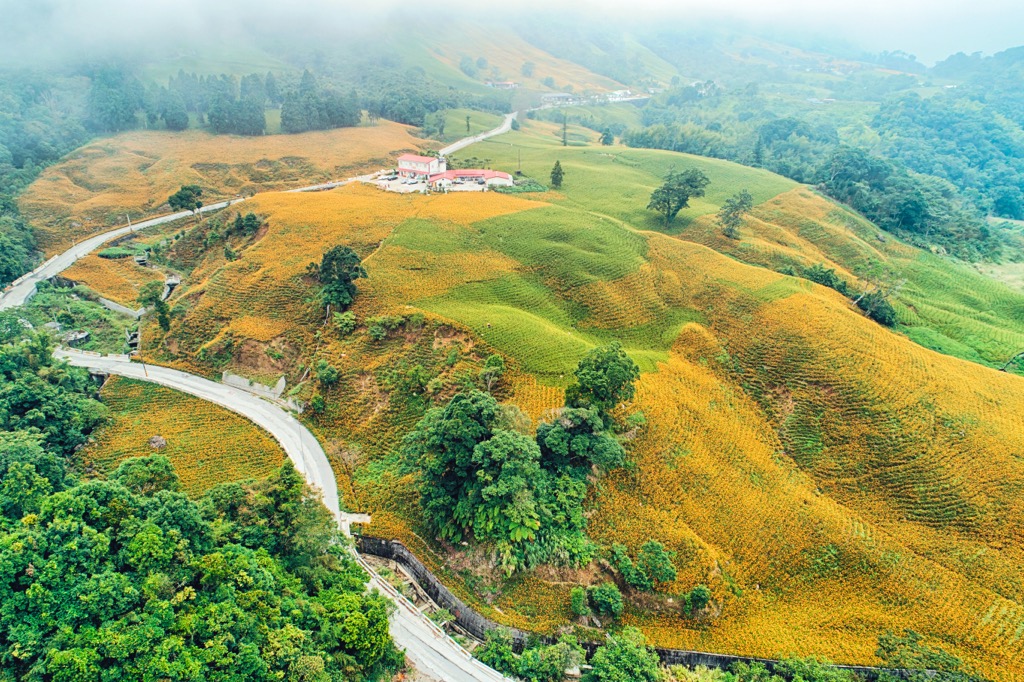
Taitung City, located in the southeastern part of Taiwan, is a vibrant and inviting destination that offers a unique blend of natural beauty and cultural experiences. Stunning landscapes, including the Pacific Ocean, mountain ranges, and lush tropical forests, surround the city.
Take to Taitung’s hills and head to the Luye Highlands (鹿野谷) for a scenic stretch of emerald rolling hills. A particularly popular spot in summer, Luye Highlands hosts the annual Taiwan International Hot-Air Balloon Festival. Look above, and you’ll see colorful blimps and cute and quirky hot-air balloons floating in the sky. When you’re visiting in other months, you can hike and bike across the verdant trails along the undulating terrain.
Then, wander around a dense beefwood grove as you get up close to nature in the Taitung Forest Park (台東森林公園). Situated along the ocean, you can hear the roaring of the seas in the dense woodlands. You’ll come across the large and sparkling Pipa Lake that mirrors the beautiful blue skies. Climb the elevated observation deck for wonderful views of the forest and wide ocean.
Finally, if you want to go island-hopping, board a ferry to offshore Green Island (綠島) and Orchid Island (蘭嶼島). Known for its clear water and coral reef, the islands are a popular spot for diving and snorkelling. You can also explore the lush landscape that flourishes across these volcanic islands and also learn about the isles’ rich cultural heritage.

Start your journey in Taipei and board a train to Fuli Train Station. If you prefer to arrive in Chenggong Township, take a train from Taipei to Yuli Train Station, then travel on the 8181 bus to Chenggong. If you prefer to make your way to Hai’an Mountains Major Wildlife Habitat, you can hire a car or scooter in Taipei or Hualien. It’s 284 km (176 mi) from Taipei and a 116 km (72 mi) drive from Hualien City.
Explore Hai’an Mountains Major Wildlife Habitat with the PeakVisor 3D Map and identify its summits.






